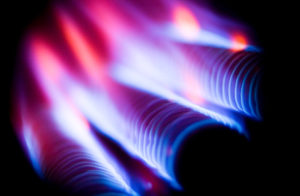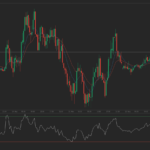 Natural gas was little changed in early European trading on Thursday following three days of hefty gains as investors braced for the Energy Information Administrations weekly stockpiles data, while weather forecasts continued to call for very warm weather across many US regions.
Natural gas was little changed in early European trading on Thursday following three days of hefty gains as investors braced for the Energy Information Administrations weekly stockpiles data, while weather forecasts continued to call for very warm weather across many US regions.
Natural gas for delivery in July was 0.14% higher at $2.895 per million British thermal units at 7:54 GMT, shifting in a daily range of $2.914 – $2.878. The contract rose 1.6% on Wednesday to $2.891, having earlier touched a three-week high of $2.922. Prices soared a combined 9.7% the previous two sessions.
The Energy Information Administration is expected to print later in the day a stockpiles build of 113 billion cubic feet for the week ended June 5th, according to analysts median estimates. If confirmed, this would expand surpluses, with the five-year average gain for the week pegged at 89 bcf, while stockpiles rose by 109 bcf a year earlier. A reading below 110 bcf would be considered bullish, and one above 115 bcf – quite bearish.
The government agency said last Thursday that US natural gas stockpiles increased by 132 billion cubic feet in the week ended May 29th, exceeding projections. Total gas held in US storage hubs amounted to 2.233 trillion cubic feet, flipping into a surplus of 1.0% to the five-year average of 2.211 trillion from a 0.8% deficit a week earlier.
Even if todays data register a quite bearish reading, the market might quickly look past it, with overall sentiment being currently dictated by weather developments.
According to NatGasWeather.com, natural gas demand in the US will be moderate compared to normal through June 17th, and locally high over the Southeast, with additional warming expected across the country’s southern and eastern regions during the following week.
Widespread warmth
The eastern, western and southern US continue to experience highs in the upper 80s to 90s, driving moderately strong cooling demand. The Southeast, including Florida, will drive the nation’s strongest natural gas demand as temperatures reach the mid 90s to mid 100s. The far northern US will remain under the influence of Canadian weather systems tracking through, NatGasWeather.com said, bringing a slight cooling to the Great Lakes and Northeast. Showers and thunderstorms in many regions will keep providing some cooling, but temperatures will overall trend higher compared to last week, leading to somewhat thinner inventory data next week.
June 18ths report will still show another above-average build, but much closer to the average. Early estimates call for a gain of slightly above 100 bcf for the week ended June 12th, compared to the five-year average inventory increase of 87 billion cubic feet and the year-ago build of 112 bcf.
Overall active weather will continue during the third week of June and into the fourth as well. The eastern, western and southern US will remain very warm to hot as readings hover near the average or several degrees higher, while the north-central US continues to feel the effects of Canadian systems that will keep readings near normal and quite comfortable for the season.
Latest extended forecasts back the case of high pressure holding strong across the the South and East during the fourth week of June, keeping cooler Canadian air confined to the Midwest and interior Northeast and leaving the rest of the country very warm to hot.
Readings
According to AccuWeather.com, the high in New York today will be 90 degrees Fahrenheit, 12 above usual, and 88 degrees on June 13th, before easing back to near-average afterwards. Chicago will reach 81 degrees tomorrow, 6 above usual, and will experience warmer-than-usual weather through June 19th.
Down South, Houston will peak at the seasonal 90-91 degrees today and tomorrow, before easing a few degrees the following five days. On the West Coast, highs in Los Angeles will be in the upper 70s to 80 degrees through the third week of June, matching the average 77-79 degrees for the period.
Pivot points
According to Binary Tribune’s daily analysis, July natural gas futures’ central pivot point stands at $2.879. In case the contract penetrates the first resistance level at $2.934 per million British thermal units, it will encounter next resistance at $2.976. If breached, upside movement may attempt to advance to $3.031 per mBtu.
If the energy source drops below its S1 level at $2.837 per mBtu, it will next see support at $2.782. In case the second key support zone is breached, the power-station fuel’s downward movement may extend to $2.740 per mBtu.
In weekly terms, the central pivot point is at $2.623. The three key resistance levels are as follows: R1 – $2.691, R2 – $2.791, R3 – $2.859. The three key support levels are: S1 – $2.523, S2 – $2.455, S3 – $2.355.





